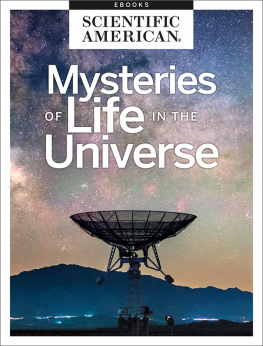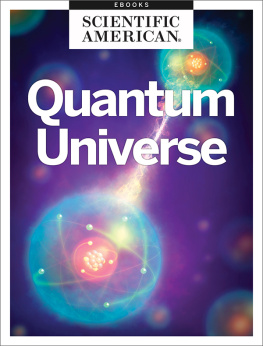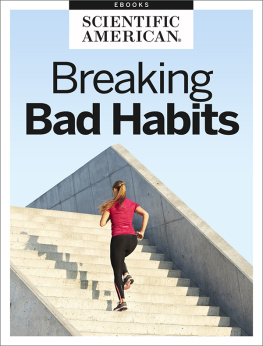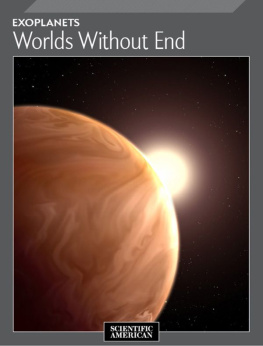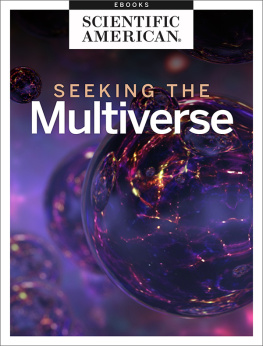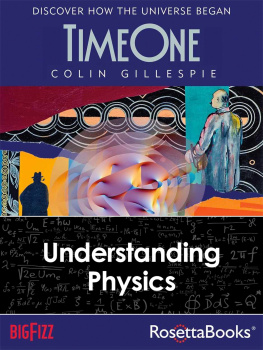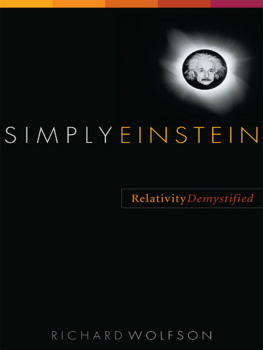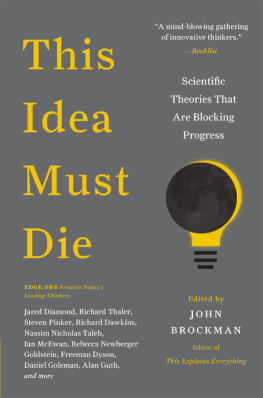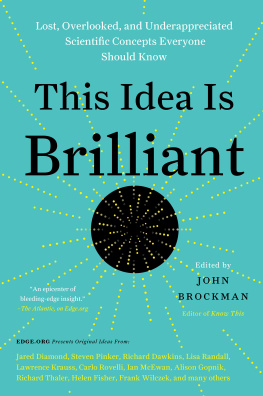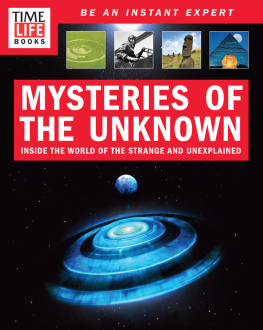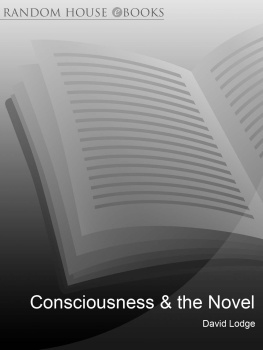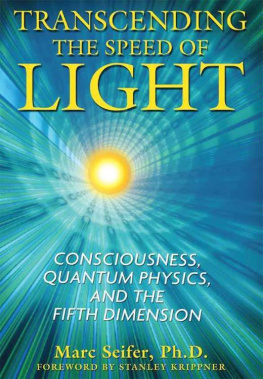A Question of Time
The Ultimate Paradox
From the Editors of Scientific American
Cover Image: Getty
Copyright 2012 Scientific American, a division of Nature America, Inc.
All rights reserved.
Published by Scientific American
75 Varick St.
New York, NY 10013
www.scientificamerican.com
ISBN: 978-1-466824188
Scientific American and Scientific American MIND are trademarks of Scientific American, Inc.,
used with permission.


A Question of Time
The Ultimate Paradox
From the Editors of Scientific American
Table of Contents
Introduction
by the Editors
Section 1
1.1
by Gary Stix
1.2
by Paul Davies
1.3
by George Musser
Section 2
2.1
by Karen Wright
2.2
by Antonio Damasio
2.3
by the Editors
Section 3
3.1
by William J. H. Andrews
3.2
by W. Wayt Gibbs
Section 4
4.1
by Craig Callender
4.2
by John Matson
4.3
by Lee Smolin
4.4
by John D. Barrow and John K. Webb
Section 5
5.1
by Ronald C. Lasky
5.2
by John Matson
Section 6
6.1
by Paul Davies
Section 7
7.1
by Gabriele Veneziano
7.2
by George Musser
Introduction: What Time Is It?
That simple question is probably asked more often today than ever. In our clock-studded society, the answer is never more than a glance away, and so we can blissfully partition our days into ever smaller increments for ever more tightly scheduled tasks, confident that we will always know it is 7:03 p.m.
Modern scientific revelations about time, however, make the question endlessly frustrating. If we seek a precise knowledge of the time, the elusive infinitesimal of now dissolves into a scattering flock of nanoseconds. Bound by the speed of light and the velocity of nerve impulses, our perceptions of the present sketch the world as it was an instant agofor all that our consciousness pretends otherwise, we can never catch up. Even in principle, perfect synchronicity escapes us. Relativity dictates that, like a strange syrup, time flows slower on moving trains than in the stations and faster in the mountains than in the valleys. The time for our wristwatch is not exactly the same as the time for our head. It is roughly 7:04 p.m.
Our intuitions are deeply paradoxical. Time heals all wounds, but it is also the great destroyer. Time is relative but also relentless. There is time for every purpose under heaven, but there is never enough. Time flies, crawls and races. Seconds can be both split and stretched. Like the tide, time waits for no man, but in dramatic moments it also stands still. It is as personal as the pace of ones heartbeat but as public as the clock tower in the town square. We do our best to reconcile the contradictions. It seems like 7:05 p.m.
And of course, time is money. It is the partner of change, the antagonist of speed, the currency in which we pay attention. It is our most precious, irreplaceable commodity. Yet still we say we dont know where it goes, and we sleep away a third of it, and none of us really can account for how much we have left. We can find 100 ways to save time, but the amount remaining nonetheless diminishes steadily. It is already 7:06 p.m.
Time and memory shape our perceptions of our own identity. We may feel ourselves to be at historys mercy, but we also see ourselves as free-willed agents of the future. That conception is disturbingly at odds with the ideas of physicists and philosophers, however, because if time is a dimension like those of space, then yesterday, today and tomorrow are all equally concrete and determined. The future exists as much as the past does; it is just in a place that we have not yet visited. Somewhere, it is 7:07 p.m.
Time is the substance of which I am made, Argentine writer Jorge Luis Borges wrote. Time is a river that carries me away, but I am the river; it is a tiger that destroys me, but I am the tiger; it is a fire that consumes me, but I am the fire. This special issue of Scientific American summarizes what science has discovered about how time permeates and guides both our physical world and our inner selves. That knowledge should enrich the imagination and provide practical advantages to anyone hoping to beat the clock or at least to stay in step with it. It is now 7:08 p.m. Synchronize your watches.
-the Editors
SECTION 1
History and Philosophy
Real Time
by Gary Stix
More than 200 years ago Benjamin Franklin coined the now famous dictum that equated passing minutes and hours with shillings and pounds. The new millenniumand the decades leading up to ithas given his words their real meaning. Time has become to the 21st century what fossil fuels and precious metals were to previous epochs. Constantly measured and priced, this vital raw material continues to spur the growth of economies built on a foundation of terabytes and gigabits per second.
An English economics professor even tried to capture the millennial zeitgeist by supplying Franklins adage with a quantitative underpinning. According to a formula derived by Ian Walker, now at Lancaster University Management School, three minutes of brushing ones teeth works out to the equivalent of 49 cents, the compensation (after taxes and Social Security) that the average Briton gives up by doing something besides working. Half an hour of washing a car by hand translates into $4.90.
This reduction of time to money may extend Franklins observation to an absurd extreme. Still, the commodification of time is genuineand results from a radical alteration in how we view the passage of events. Our fundamental human drives have not changed from the Paleolithic era, hundreds of thousands of years ago. Much of what we are about centers on the same impulses to eat, procreate, fight or flee that motivated Fred Flintstone. Despite the constancy of these primal urges, human culture has experienced upheaval after upheaval in the period since our hunter-gatherer forebears roamed the savannas. Perhaps the most profound change in the long transition from Stone Age to information age revolves around our subjective experience of time.
By one definition, time is a continuum in which one event follows another from the past through to the future. Today the number of occurrences packed inside a given interval, whether it be a year or a nanosecond, increases unendingly. The technological age has become a game of one-upmanship in which more is always better. In his 2000 book Faster: The Acceleration of Just About Everything , James Gleick notes that before Federal Express shipping became commonplace in the 1980s, the exchange of business documents did not usually require a package to be delivered absolutely positively overnight. At first, FedEx gave its customers an edge. Soon, though, the whole world expected goods to arrive the next morning. When everyone adopted overnight mail, equality was restored, Gleick writes, and only the universally faster pace remained.
SIMULTANEITY
The advent of the Internet eliminated the burden of having to wait until the next day for the FedEx truck. In Internet time, everything happens everywhere at onceconnected computer users can witness an update to a Web page at an identical moment in New York City or Dakar. Time has, in essence, triumphed over space. Noting this trend, Swatch, the watchmaker, went so far as to try to abolish the temporal boundaries that separate one place from another. It created a standard for Internet timekeeping that eliminated time zones, dividing the day into 1,000 increments that are the same anywhere on the globe, with the meridian at Biel, Switzerland, the location of Swatchs headquarters.
Next page

